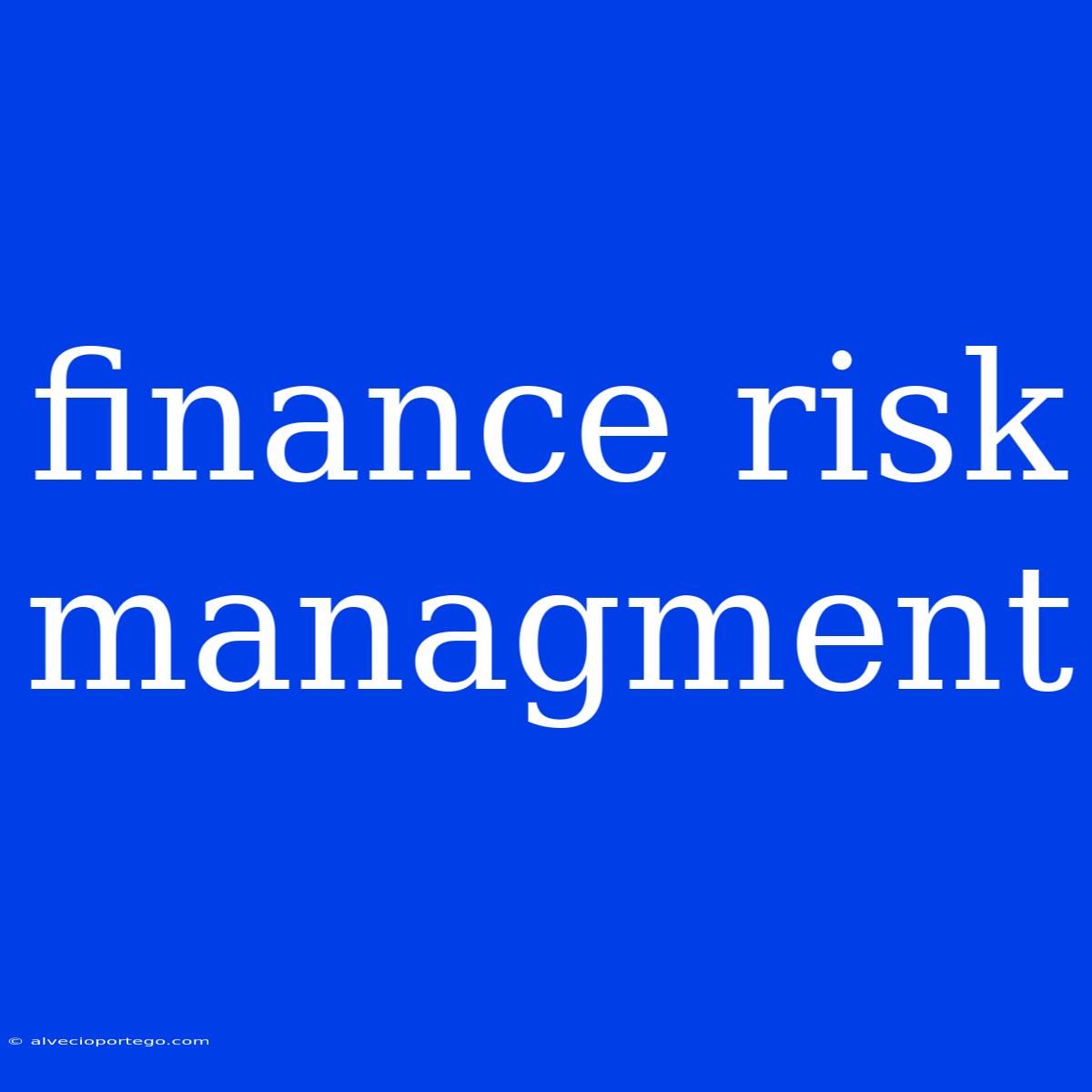Finance Risk Management: A Guide to Protecting Your Investments
Finance risk management is the process of identifying, assessing, and managing potential risks that could negatively impact your financial goals. It's an essential part of making informed financial decisions and ensuring the long-term stability of your investments.
Understanding Financial Risks
Financial risks can arise from various sources, including:
- Market Risk: This refers to the risk of losses due to fluctuations in market prices, such as stock prices, interest rates, and exchange rates.
- Credit Risk: The risk that a borrower may default on their debt obligations, leading to financial losses.
- Liquidity Risk: The risk of not being able to easily convert an asset into cash when needed.
- Operational Risk: The risk of financial losses due to errors, fraud, or other operational failures.
- Regulatory Risk: The risk of financial losses due to changes in laws or regulations.
Key Principles of Finance Risk Management
- Identification: The first step is to identify all potential risks that could impact your finances. This can be done through research, analysis, and discussions with financial advisors.
- Assessment: Once risks are identified, it's crucial to assess their likelihood and potential impact. This involves determining the probability of each risk occurring and the potential financial losses associated with it.
- Mitigation: The next step is to develop strategies to mitigate or manage the identified risks. This may involve diversifying investments, hedging against market volatility, or implementing internal controls to reduce operational risk.
- Monitoring and Review: Finally, it's essential to continuously monitor and review your risk management strategy to ensure it remains effective. This includes staying updated on market trends, regulatory changes, and the performance of your investments.
Strategies for Finance Risk Management
- Diversification: Spreading your investments across different asset classes, industries, and geographies can reduce your overall risk exposure.
- Hedging: Employing strategies to protect against potential losses, such as buying put options on stocks to mitigate downside risk.
- Insurance: Obtaining insurance policies, such as property insurance or liability insurance, can provide financial protection against unexpected events.
- Financial Planning: Creating a well-defined financial plan with clear goals and strategies can help you navigate financial uncertainties.
- Professional Advice: Consulting with a qualified financial advisor can provide valuable insights and guidance on managing financial risks.
Conclusion
Finance risk management is an ongoing process that requires vigilance and adaptability. By understanding the different types of risks, implementing appropriate mitigation strategies, and continuously monitoring your financial portfolio, you can increase your chances of achieving your financial goals and protecting your investments. Remember, it's not about avoiding risk altogether, but rather managing it effectively to maximize your potential for success.

